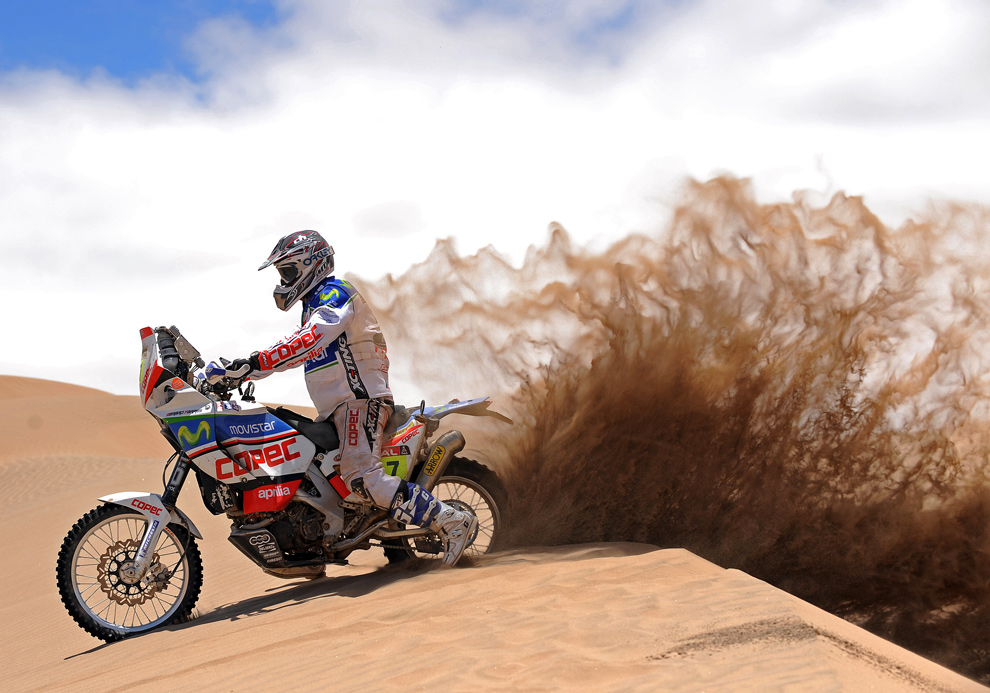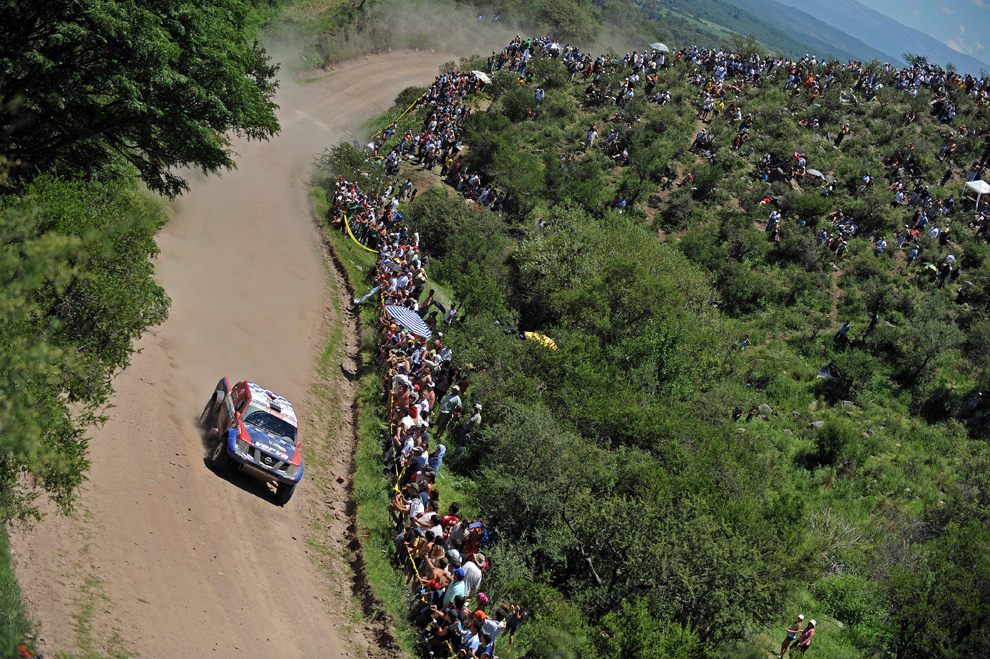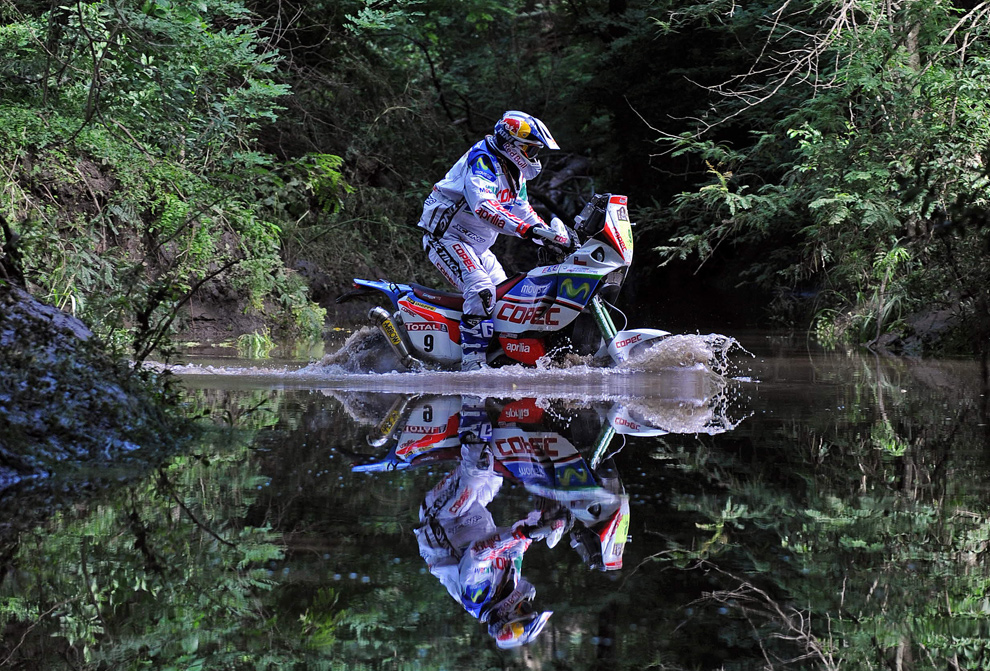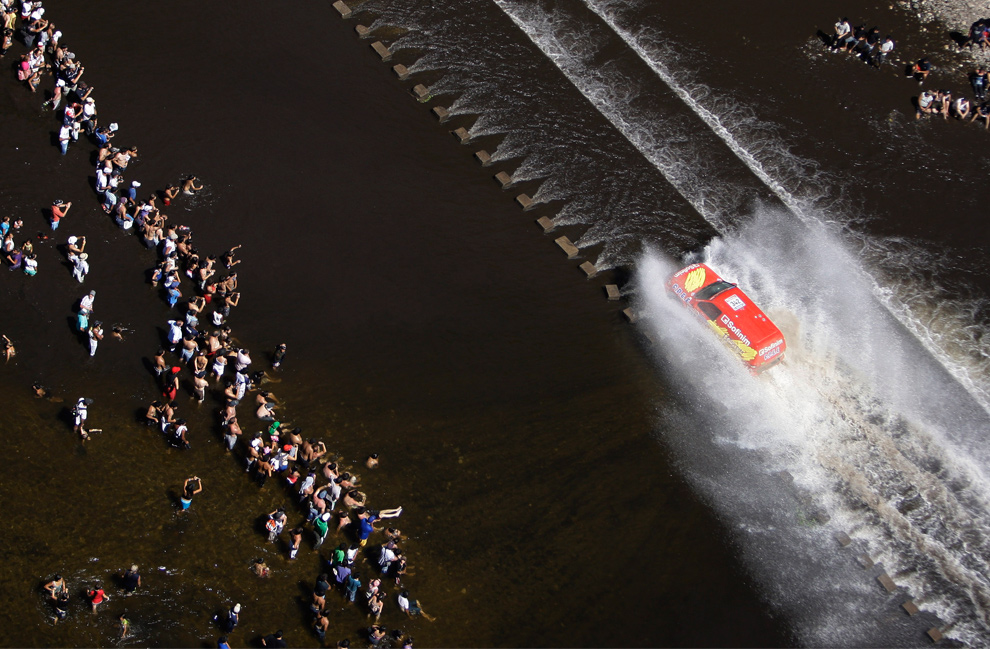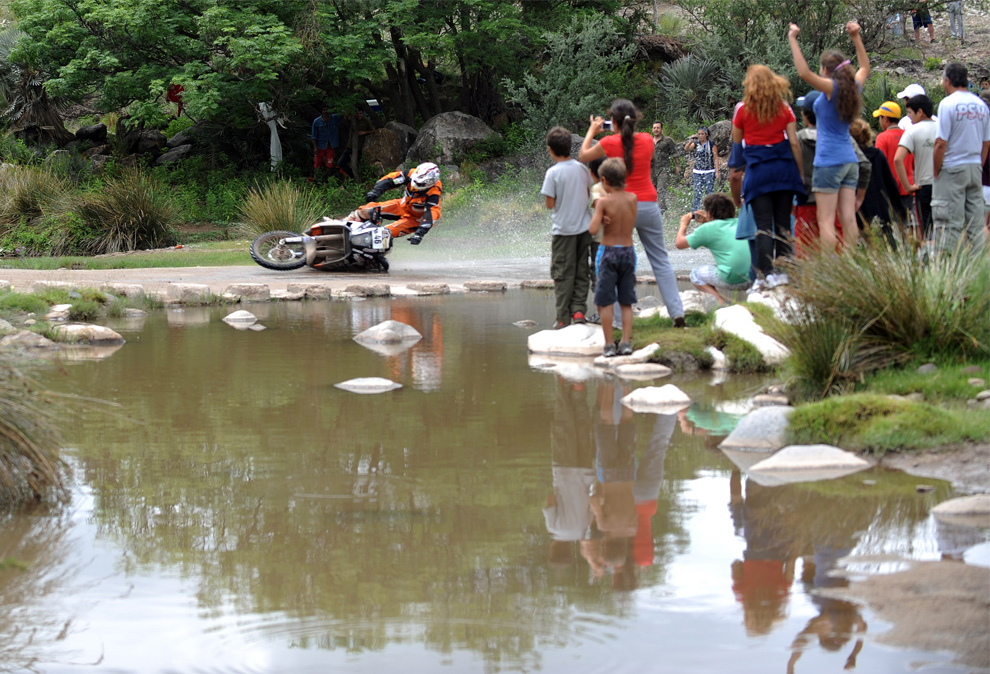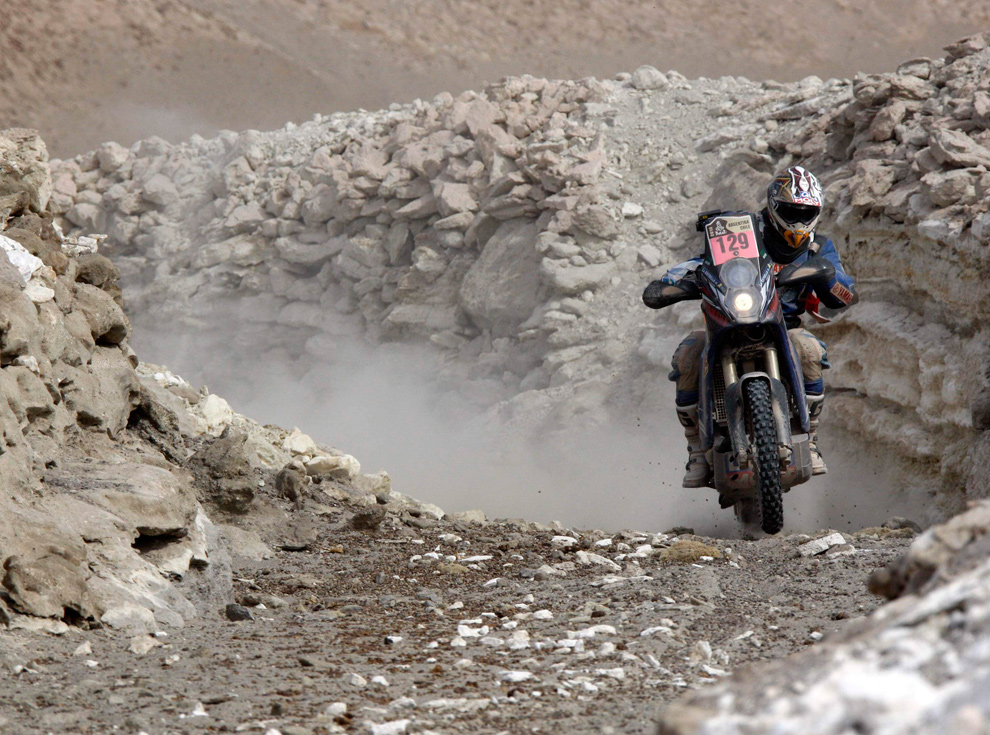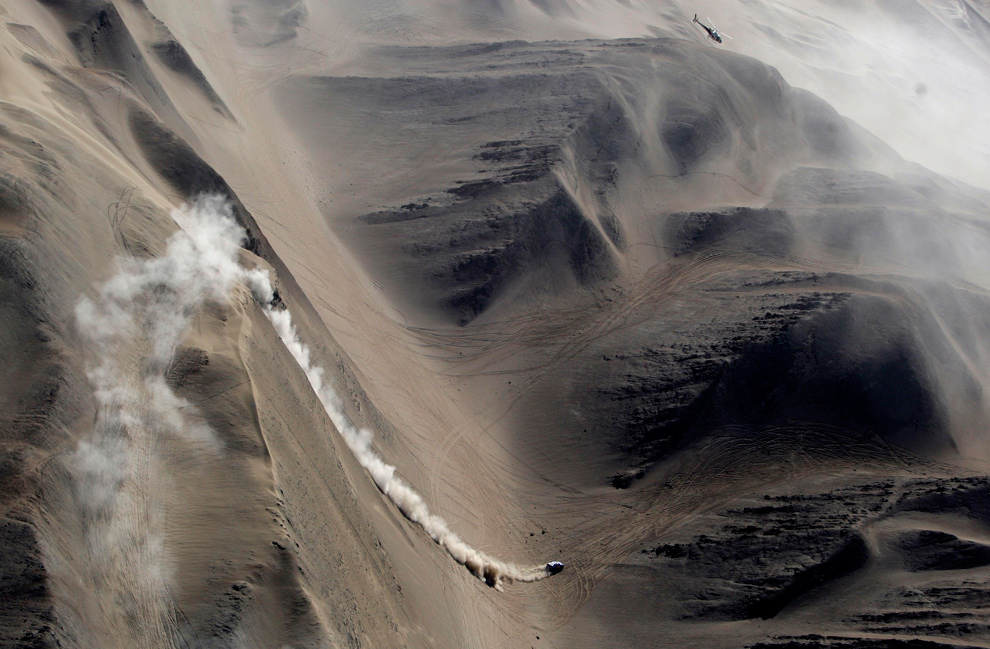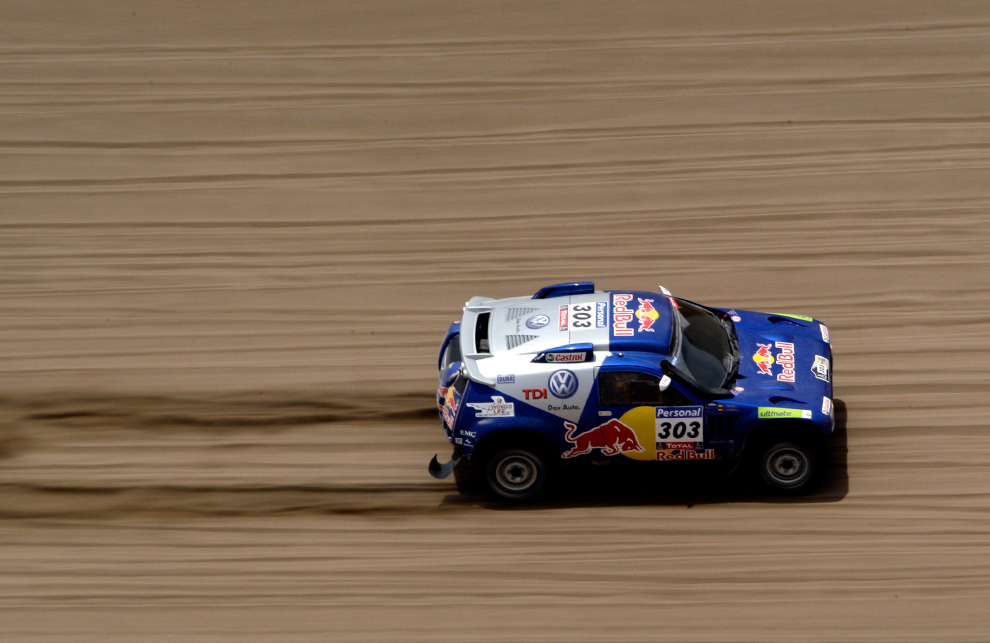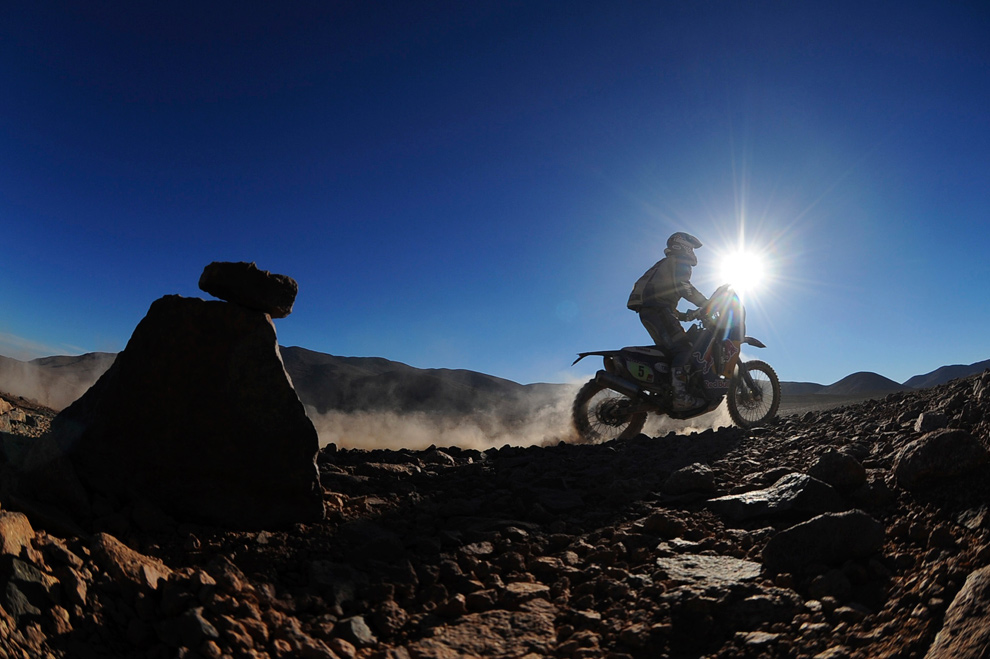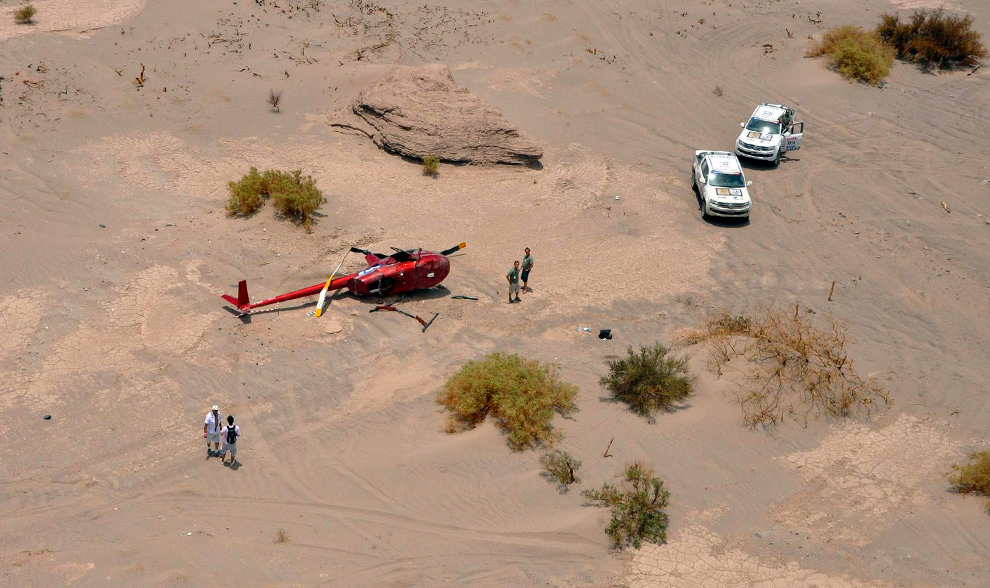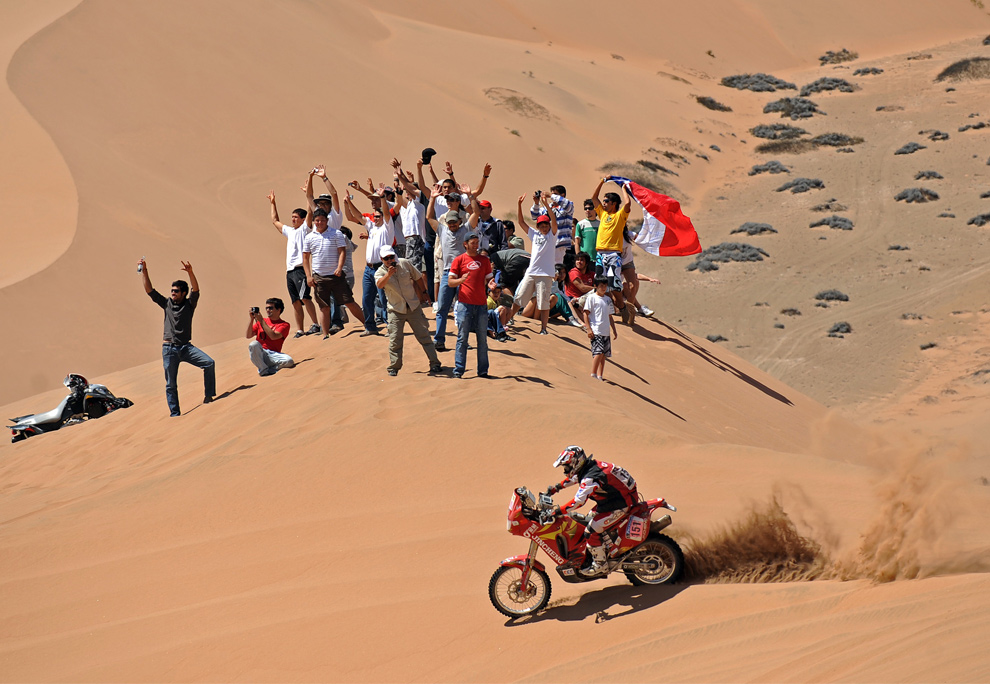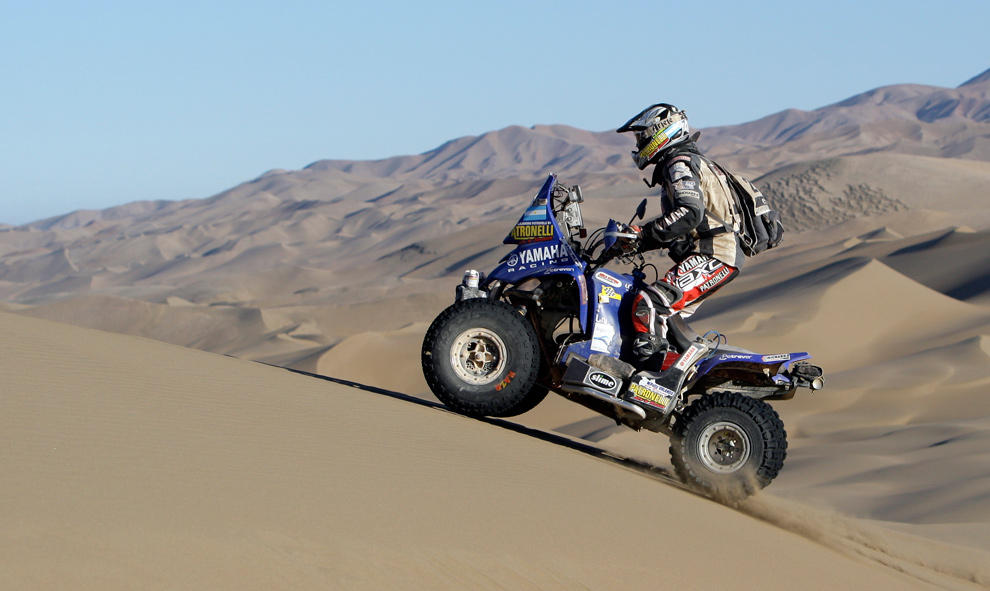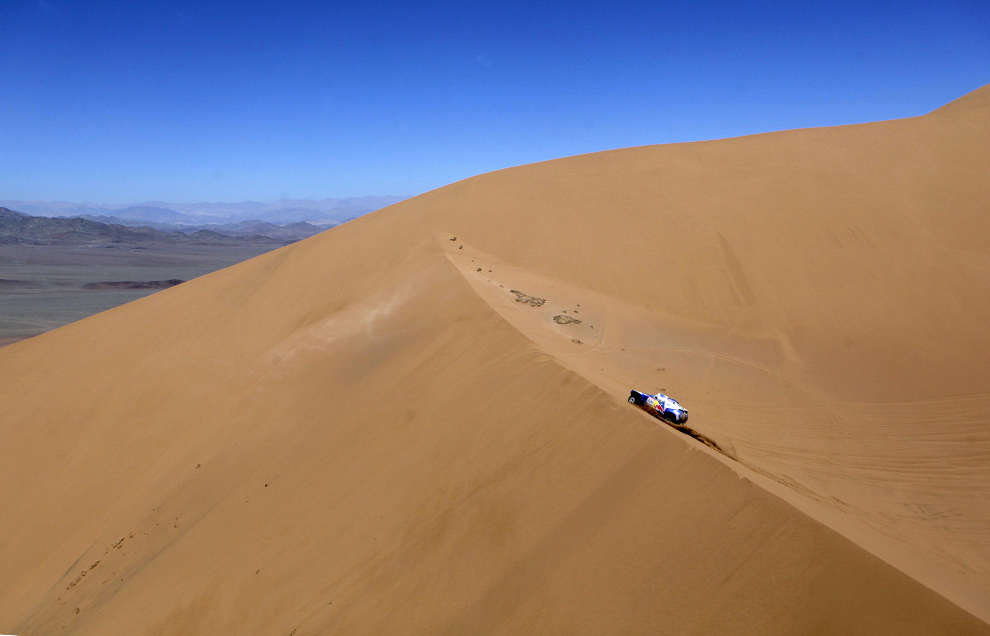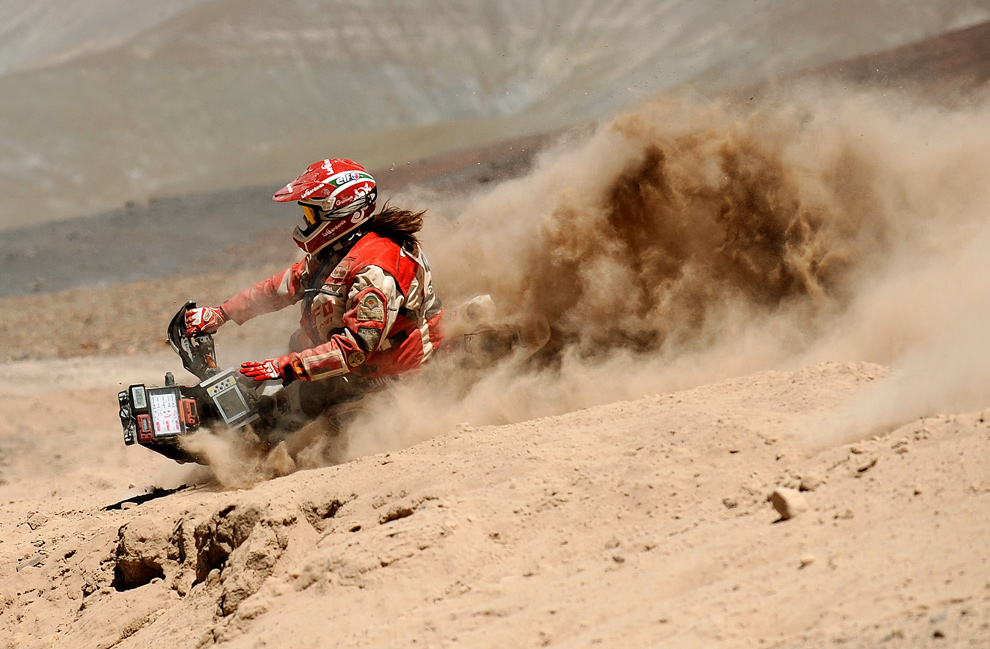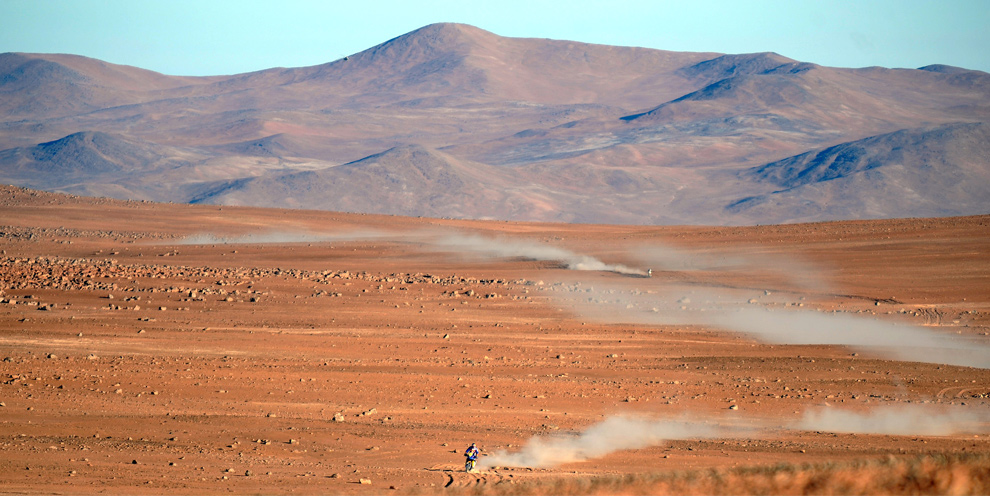This year's 31st running of the Dakar Rally is being held in South America for the second year, instead of the traditional African route. The reason is - growing issecurity and possible terrorist attack concerns. This year's race began and will end in Buenos Aires, covering a looping 9,000 kilometers between Argentina and Chile over 14 stages. 362 Teams began the race with 176 motorcycles and quad bikes, 134 cars, and 52 trucks. The race is just over halfway completed now, the winners expected to cross the finish line on January 16th.
Below - several photographs from the first half of the rally.
Spain's Gerard Farres Guell kicks up sand with his Aprilia during the 4th stage of the Dakar 2010 between Fiambala, Argentina, and Copiapo, Chile on January 5, 2010. Spain's Marc Coma won the stage, France's David Casteu took the second place and France's Cyril Despres the third. (GABRIEL BOUYS/AFP/Getty Images)
The Volkswagen Touareg of South African driver Giniel De Villers and co-driver Dirk Von Zitzewitz of Germany attends the symbolic start of the Dakar 2010 in Buenos Aires on January 1, 2010. (ALEJANDRO PAGNI/AFP/Getty Images)
Poland's Krzysztof Holowczyc in his Nissan passes race fans on a hillside during the Dakar 2010 between Colon and Cordoba, Argentina, on January 2, 2010. (GABRIEL BOUYS/AFP/Getty Images)
Chile's Francisco Lopez Contardo guides his Aprilia through water during Stage 1 of the Dakar 2010 between Colon and Cordoba, Argentina, on January 2, 2010. (GABRIEL BOUYS/AFP/Getty Images)
People watch Nissan's Jean-Pierre Strugo and co-driver Yves Ferri, of France, splash their car through a river crossing during stage one of the Argentina-Chile Dakar Rally 2010 in Rio Cuarto, Argentina, Saturday, Jan. 2, 2010. (AP Photo/Natacha Pisarenko)
France's Jean Claude Mazet falls from his KTM during the 2nd stage of the Dakar 2010 between Cordoba and La Rioja, Argentina, on January 3, 2010. (GABRIEL BOUYS/AFP/Getty Images)
Manuel Jamett of Chile climbs a rocky road on his Yamaha motorcycle during the sixth stage of the Dakar Rally 2010 from Antofagasta to Iquique January 7, 2010. (REUTERS/Jacky Naegelen)
BMW's driver France's Stephane Peterhansel and co-driver Jean-Paul Cottret cross a valley during the seventh stage of the Argentina-Chile Dakar Rally 2010 between Iquique and Antofagasta, Chile, Friday, Jan. 8, 2010. (AP Photo/Natacha Pisarenko)
Russia's Leonid Novitskiy crosses dunes in his BMW during the 7th stage of the Dakar 2010, between Iquique and Antofagasta, Chile, on January 8, 2010. (GABRIEL BOUYS/AFP/Getty Images)
Volkswagen's Carlos Sainz and co-driver Lucas Cruz, of Spain, compete during stage six of the Argentina-Chile Dakar Rally 2010 between Antofagasta and Iquique, Chile, Thursday, Jan. 7, 2010. (AP Photo/Natacha Pisarenko)
Helder Rodriguez of Portugal rides his Yamaha motorcycle during the eighth stage of the Dakar Rally from Antofasgasta to Copiapo, January 10, 2010. (REUTERS/Stringer/Pool)
An aerial view shows the site where a Robinson 44 helicopter crashed in Fiambala, Catamarca province, January 4, 2010. The pilot, co-pilot and two reporters who were following the Dakar Rally sustained injuries when their helicopter crashed, local media reported. (REUTERS/Gendarmeria/Handout)
China's Wenmin Su rides his Jincheng past cheering onlookers during the 4th stage of the Dakar 2010 between Fiambala, Argentina, and Copiapo, Chile on January 5, 2010. (GABRIEL BOUYS/AFP/Getty Images)
The Dakar encampment is seen during stage five of the Argentina-Chile Dakar Rally 2010 in Antofagasta, Chile, Wednesday, Jan. 6, 2010. (AP Photo/Frederic Le Floc'h)
Foggy clouds cover part of the area where the 5th stage of the Dakar 2010 between Copiapo and Antofagasta, Chile, is taking place on January 6, 2010. (GABRIEL BOUYS/AFP/Getty Images)
Yamaha's rider Argentina's Alejandro Patronelli climbs a dune on his quad bike during the seventh stage of the Argentina-Chile Dakar Rally 2010 between Iquique and Antofagasta, Chile, Friday, Jan. 8, 2010. (AP Photo/Natacha Pisarenko)
South African Giniel De Villiers drives his Volkswagen during the 8th stage of the Dakar 2010, between Antofagasta and Copiapo, Chile, on January 10, 2010. (NATACHA PISARENKO/AFP/Getty Images)
Italy's Silvia Giannetti falls from her KTM during the 5th stage of the Dakar 2010 between Copiapo and Antofagasta, Chile, on January 6, 2010. (GABRIEL BOUYS/AFP/Getty Images)
France's Cyril Despres crosses a wide plain his KTM during the 8th stage of the Dakar 2010, between Antofagasta and Copiapo, Chile, on January 10, 2010. (GABRIEL BOUYS/AFP/Getty Images)
SOURCE:The Dakar Rally Official Website Dakar 2010 at Wikipedia
http://www.boston.com/
 The construction and running of the railway was a huge enterprise. At the time of full operation of the railway, the railway company owned the world biggest private eucalyptus plantation. They had imported seedlings of fast growing Australian Eucalyptus and planted vast forests ready for harvesting for locomotive fuel. With not supplies of oil or coal along the rail route, this was the perfect fuel. Some 37 000 ha of land was used to produce the annual need of 570,000 tonnes of wood to fuel locomotives from Lobito, at the coast, to the Democratic Republic of Congo.
The construction and running of the railway was a huge enterprise. At the time of full operation of the railway, the railway company owned the world biggest private eucalyptus plantation. They had imported seedlings of fast growing Australian Eucalyptus and planted vast forests ready for harvesting for locomotive fuel. With not supplies of oil or coal along the rail route, this was the perfect fuel. Some 37 000 ha of land was used to produce the annual need of 570,000 tonnes of wood to fuel locomotives from Lobito, at the coast, to the Democratic Republic of Congo.
















